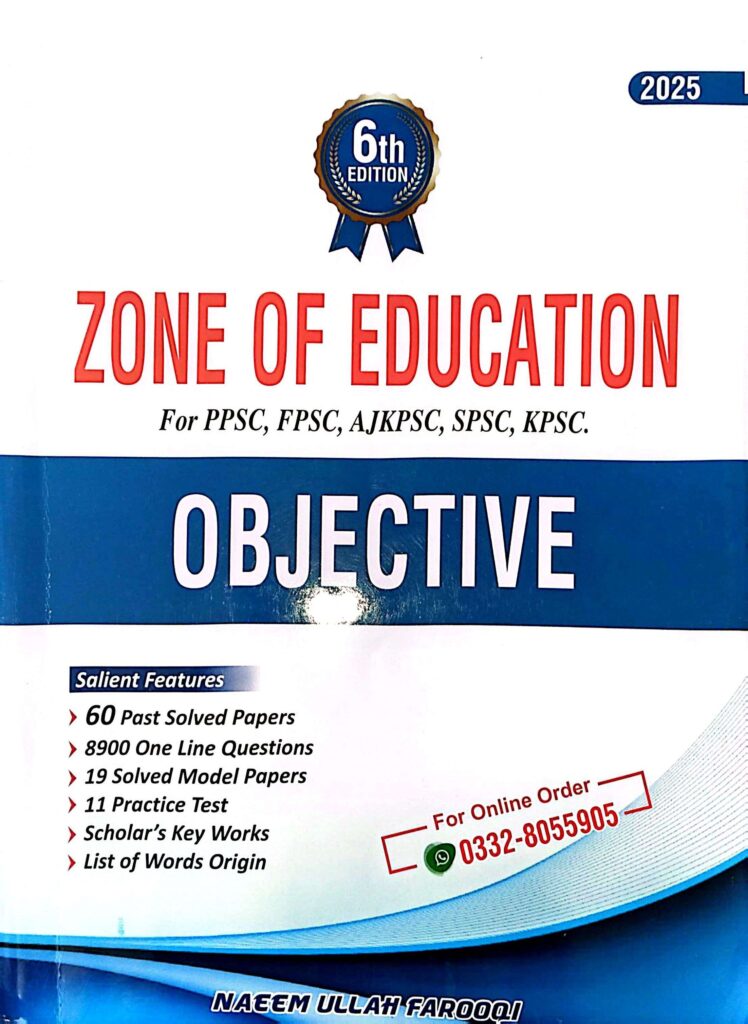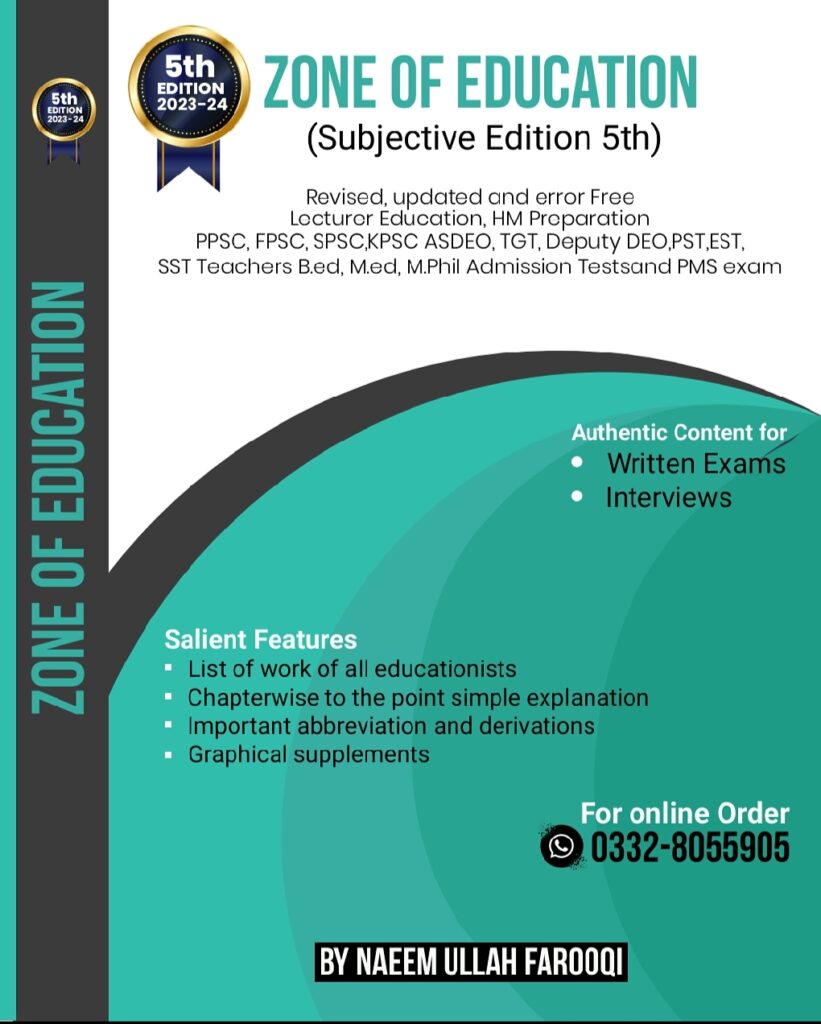GENERAL METHODS OF TEACHING
.1. Case studies that have arisen in the workplace that students must solve are:
A. Real life problems
B. Cultural problems
C. Thinking problems
D. None of the above
Ans: (A) Real life problems
2. When students are asked to prepare an analysis of critical features of an object or concept, the strategy is termed as:
A. Concept mapping
B. Characterization
C. Sequencing
D. None of the above
Ans: (B) Characterization
3. The instructional approach in which objectives are presented to learners in chronological order is known as:
A. Chronological teaching
B. Chronological ordering
C. Chronological Sequencing
D. None of the above
Ans: (C) Chronological Sequencing
4. Chunking is a technique of:
A. Knowledge
B. Memorization
C. Ordering
D. None of the above
Ans: (B) Memorization
Explanation: Chunking is the oldest method used in memorization. In this method, the items to be memorized are divided into small and easily memorable chunks or parts. This method works best when the order of the items is not important.
5. The cooperative learning method which combines whole class learning plus heterogeneous small groups is termed as:
A. Circles of Learning
B. Circles of knowledge
C. Circles of conceptual learning
D. None of the above
Ans: (A) Circles of Learning
6. Circles of learning were formulated by:
A. Rogers
B. Roger and David Johnson
C. David Johnson
D. None of the above
Ans: (B) Roger and David Johnson
7. The model of instruction where the teacher is not the sole director but is a guide and collaborator in the student’s learning is:
A. Coaching Model
B. Learning Model
C. Operating Model
D. Discipline Model
Ans: (A) Coaching Model
8. The models based on the philosophy that learning occurs when there are changes in mental structure are called:
A. Psychomotor learning models
B. Affective Learning Models
C. Knowledge Learning Models
D. Cognitive Learning Models
Ans: (D) Cognitive Learning Models
9. While teaching in the classroom, any kind of work that involves two or more students is a form of:
A. Collaborative work
B. Collaborative effort
C. Collaborative project
D. Collaborative Learning
Ans: (D) Collaborative Learning
10. When a notebook is maintained by a group in which each member of the group is expected to add an idea, the notebook is known as:
A. Collective Notebook
B. Collective work sample
C. Collective homework
D. None of the above
Ans: (A) Collective Notebook
11. Competitions can be useful in motivating some students to learn:
A. Compositions
B. Competitions
C. Collisions
D. None of the above
Ans: (B) Competitions
12. A written work by a student to demonstrate some literary or linguistic knowledge is termed as:
A. Comprehension
B. Demonstration
C. Homework
D. Compositions
Ans: (D) Compositions
13. The theory explaining the different types of learning and proposing that they require different types of teaching is remembered as:
A. Conditions of knowledge
B. Conditions of behaviours
C. Conditions of learning
D. None of the above
Ans: (C) Conditions of learning
14. The theory of Conditions of Learning was presented by:
A. Robert Gagne
B. Robert Frost
C. Dogar
D. None of the above
Ans: (A) Robert Gagne
15. Conferences are face-to-face:
A. Meetings
B. Discussions
C. Negotiations
D. None of the above
Ans: (B) Discussions
16. Conferences may occur between:
A. Teachers and students
B. Parents and teachers
C. Students and students
D. All of the above
Ans: (D) All of the above
17. The teaching approach in which students share knowledge with other students through a variety of structures is known as:
A. Cooperative Behaviour Model
B. Cooperative Classroom Model
C. Cooperative Learning Model
D. None of the above
Ans: (C) Cooperative Learning Model
18. When the teacher forms different groups among the students that take turns asking other groups questions, the strategy he/she is using is:
A. Cooperative Learning
B. Cooperative Thinking
C. Group work
D. Cooperative Review
Ans: (D) Cooperative Review
19. When teams of students work together to solve assigned problems using text provided by the teacher, the activity is called:
A. Creative Reading
B. Creative Thinking
C. Creative Thinking Reading
D. Creative Reasoning
Ans: (C) Creative Thinking Reading
20. When the teacher checks the students’ work using multiple sources of information, the task is called:
A. Cross-Checking
B. Cross-Matching
C. Cross-Cutting
D. None of the above
Ans: (A) Cross-Checking
21. _______ is a method for assigning numerical values to criteria, and the extent to which alternatives satisfy criteria.
A. Decision Taking Technique
B. Decision Matrix
C. Decision-Making Matrix
D. None of the above
Ans: (C) Decision-Making Matrix
22. Starting with general ideas and moving to more specific ideas within a topic is an old teaching strategy known as:
A. Induction
B. Reasoning
C. Deduction
D. Learning
Ans: (C) Deduction
23. When students are asked to support one point of view on a topic, then take and support an opposing point of view and then write a position paper, the whole activity is termed as:
A. Collaborations
B. Dissertations
C. Deliberations
D. None of the above
Ans: (C) Deliberations
24. Teacher-centered instruction in which the teacher tells the student what to think about a topic is philosophically termed as:
A. Dialectic Instruction
B. Dictating Instruction
C. Dictionary Instruction
D. Didactic Instruction
Ans: (D) Didactic Instruction
25. Didactic Instruction is used for the delivery of:
A. Factual information
B. Important information
C. Ordinary information
D. None of the above
Ans: (A) Factual information
26. Teacher-centered instruction which includes lecture, presentation, and recitation is also known as:
A. Old method Instruction
B. Classical Instruction
C. Direct Instruction
D. None of the above
Ans: (C) Direct Instruction
27. _______ is a teacher-centered model that focuses on student activities being guided by the teacher:
A. Directive Model
B. Indirect Model
C. Thinking Model
D. Pedagogical Model
Ans: (A) Directive Model
28. When students begin learning with an activity designed to lead them to particular concepts or conclusions, the method of teaching is called:
A. Analytical teaching
B. Invention teaching
C. Discovery Teaching
D. None of the above
Ans: (C) Discovery Teaching
29. Discovery teaching is actually a:
A. Constructivist approach
B. Positivist approach
C. Destructive approach
D. Dialectical approach
Ans: (A) Constructivist approach
30. A form of discussion that starts out with individual students formulating a response, then each student pairs with one other, then the pairs pair to form groups of four:
A. Concept web
B. Creativity web
C. Discussion Web
D. None of the above
Ans: (C) Discussion Web
JOIN ZONE OF EDUCATIONPK!
Discover the most comprehensive and reliable pedagogy resources in Pakistan, curated for competitive exam success. Our content covers all competitive exam MCQs, including PPSC, FPSC, AJKPSC, SPSC, and more. Designed to empower learners with top-notch material and insights, trust us for your preparation journey!


